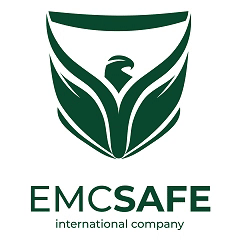Bentonite in Iron Ore Pelletizing
- Trusted binder for steel pelletizing
- Superior green and dry strength provider.
- High Absorption and Swelling Index
- Thermo-Chemical Stability
- Eco-friendly choice
Download :

Bentonite is one of the most essential binders used in the iron ore pelletizing process, playing a decisive role in the steelmaking value chain. Its unique swelling capacity, colloidal properties, and binding strength make it indispensable for producing high-quality pellets that withstand the intense thermal and mechanical conditions of blast furnaces and direct reduction processes.
Historical Background
The application of bentonite in steelmaking dates back to the early 20th century, when researchers discovered its binding ability in iron ore agglomeration. By the 1950s, bentonite became the industry standard binder for pelletizing due to its reliability, cost-effectiveness, and wide availability. Since then, it has remained the most widely used binder globally, despite the development of organic and synthetic alternatives.
Why Bentonite is Ideal for Pelletizing?
The suitability of bentonite for pelletizing stems from several key physicochemical properties:
High Swelling Capacity: When hydrated, bentonite absorbs water and expands, creating a gel-like matrix that enhances particle adhesion.
Thermal Stability: It resists decomposition at high temperatures, ensuring pellet strength during drying and induration.
Cation Exchange Capacity (CEC): This property allows bentonite to interact with iron ore particles, improving binding efficiency.
Plasticity and Cohesion: Provides green pellet strength, essential for handling and transport before firing.
Improved Reducibility: Properly dosed bentonite contributes to consistent pellet porosity, enhancing reducibility in steel furnaces.
Role of Bentonite in Pelletizing Process
In pelletizing plants, finely ground iron ore is mixed with a small percentage of bentonite (typically 0.5–1.5%). This mixture is moistened and rolled into spherical pellets, which are then thermally hardened. Bentonite ensures that:
Green pellets have sufficient mechanical strength.
Pellets resist cracking during drying and firing.
Final pellets possess uniform size and durability.
Conclusion

Swelling index | 18-20 ml/2gr |
Blaine | 2800-3500 cm2/g |
Water absorption | > 550 % |
Montmorillonite | ≥ 80% |
Particle size | 325mesh |
Moisture | 6-10% |

1. Which type of bentonite is suitable for the steel industry?
The most suitable type for iron ore pelletizing is sodium bentonite, thanks to its high swelling capacity, superior binding strength, and thermal stability. Calcium bentonite is less effective but can be chemically activated to behave like sodium bentonite. Today, low-silica sodium bentonite is preferred to minimize gangue content in the final pellets and enhance metallurgical performance.
2. What quality control standards and tests are applied to pelletizing bentonite?
To ensure consistent performance, bentonite for pelletizing undergoes strict laboratory and industrial quality checks:
Free Swelling Index (FSI): Measures swelling capacity in water.
Loss on Ignition (LOI): Determines volatile matter content and thermal behavior.
Compressive Strength Test (Cold Crushing Strength – CCS): Evaluates green pellet strength before firing.
Drop Number Test: Assesses resistance of green pellets to breakage during handling.
Tumble & Abrasion Tests: Verify fired pellet durability under mechanical stress.
Chemical Composition Analysis (XRF, ICP): Measures SiO₂, Al₂O₃, Fe₂O₃, and other oxides.
Moisture Content & Plasticity Index: Critical for pellet formation.
These tests guarantee that bentonite provides the required binding and does not introduce excessive impurities.
3. How does increasing bentonite dosage affect pellet properties?
Excessive bentonite (above 1.5–2 wt.%) negatively influences pellet chemistry and metallurgy:
Lower Iron Grade: Bentonite introduces gangue minerals, diluting Fe content.
Higher Silica Impurities: Raises SiO₂ level, reducing pellet quality.
Reduced Strength at High Temperatures: Excess clay increases slag formation, lowering hot compressive strength.
Impact on Reducibility: Excessive gangue decreases porosity, slowing reduction in furnaces.
Common solutions to mitigate these effects:
Use low-silica sodium bentonite with higher binding efficiency.
Optimize binder dosage via pilot plant trials.
Employ hybrid binders (organic + bentonite) to balance strength and purity.
Beneficiate iron ore to higher Fe grades before pelletizing.
4. What are the advantages and disadvantages of bentonite compared to alternative binders?
Advantages of Bentonite
Widely available and cost-effective.
Provides excellent green and fired pellet strength.
High thermal stability, ensuring industrial reliability.
Easy handling and compatibility with existing processes.
Disadvantages of Bentonite
Introduces silica and alumina impurities.
Slightly lowers the iron grade of pellets.
Environmental concerns about mining and disposal.
Comparison with Alternatives
Organic Binders (e.g., CMC, starch): Improve pellet purity (no silica contamination) but are more expensive, less stable at high temperatures, and often require process adjustments.
Percolates & Composite Binders: Provide high strength with low gangue, but have limited availability and higher costs.
Economic Perspective: Bentonite remains dominant because its performance-to-cost ratio is superior, though hybrid systems (bentonite + organic) are gaining traction in advanced steelmaking plants.



